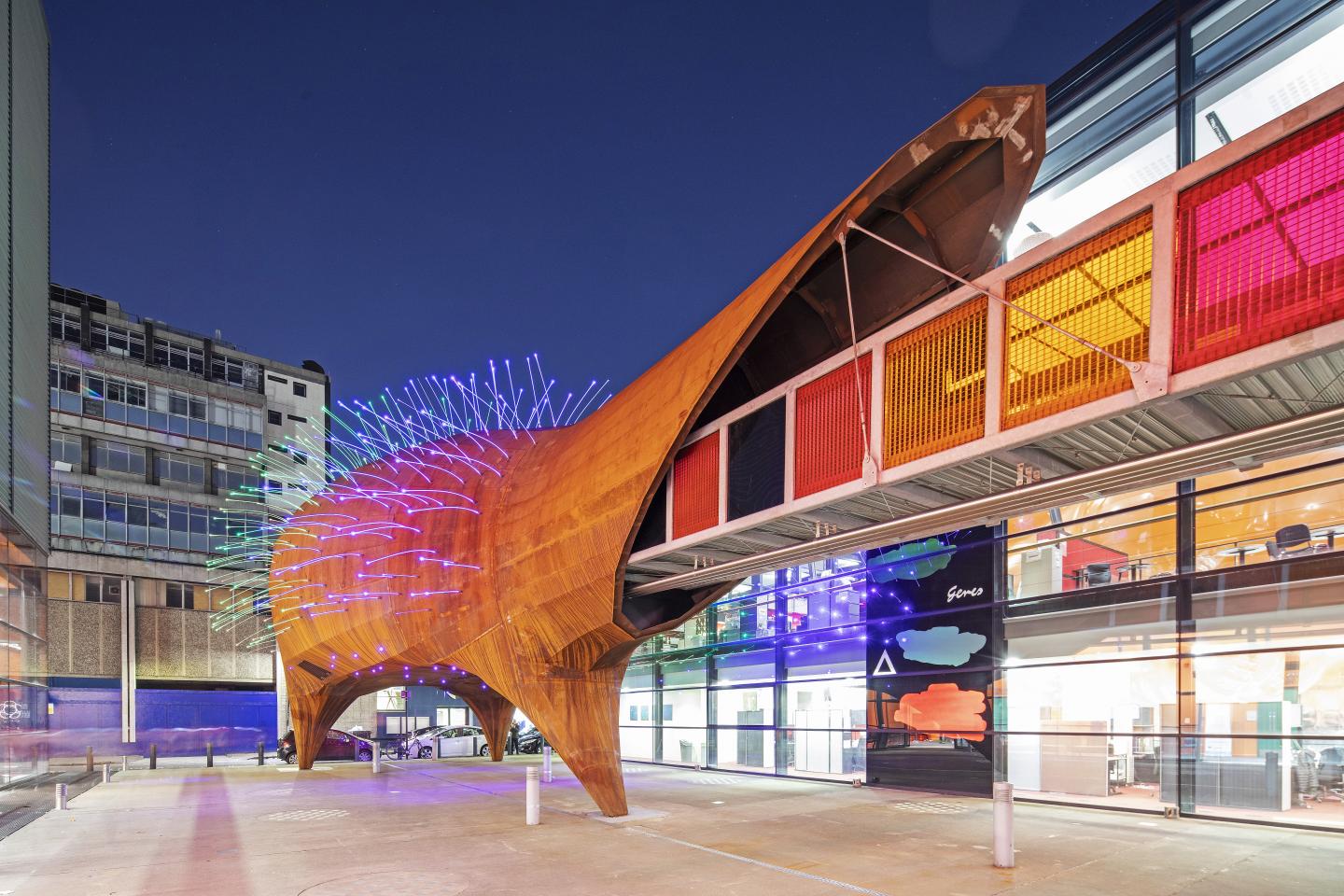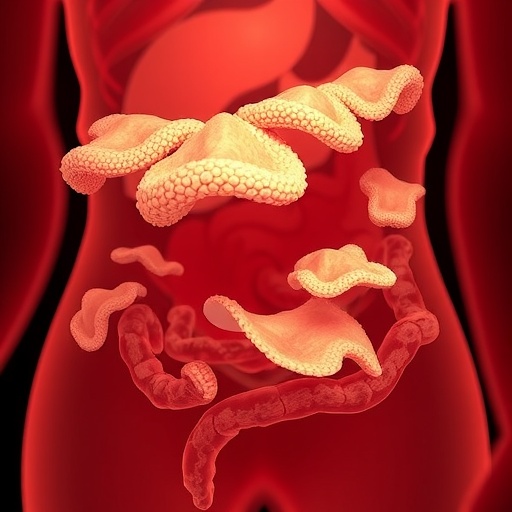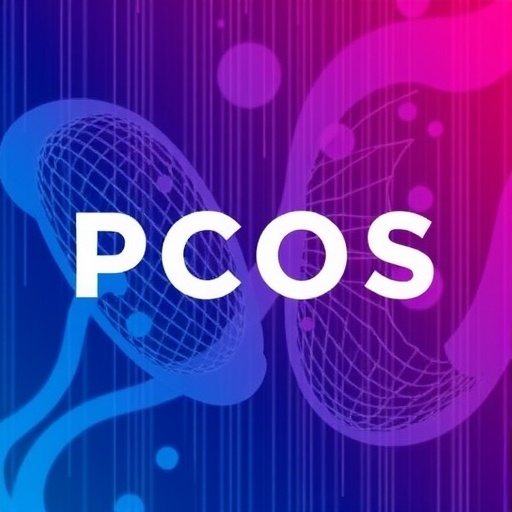
Credit: Queen Mary University of London
‘Neuron Pod’ – a striking 23-metre long and 10-metre high free-standing structure – has opened its doors as an informal science learning centre at Queen Mary University of London’s Whitechapel campus.
The launch was marked by a visit from children from Christ Church Primary School, Brick Lane, who took part in an interactive science education activity about the biology of ‘Snot, Sick and Scabs’, run by Centre of the Cell, Queen Mary’s informal science learning centre.
Since opening in September 2009, Centre of the Cell has delivered a range of unique educational programmes designed to inspire pupils to pursue a career in the sciences and to engage the public with biomedical research, with more than 180,000 people participating in their activities to date.
Their original embryo-shaped science education centre was the first in the world to be located within working biomedical research laboratories. Planned to address demand, Neuron Pod will help increase visitor numbers, and provide a multi-functional space for live science shows, hands-on workshops, experiments, debates, films and exhibitions.
Professor Fran Balkwill, Director of Centre of the Cell, Queen Mary University of London, said: “Neuron Pod will allow us to fulfil our potential and offer so much more to our visitors. What’s really important to us is that it increases our ability to interact with the local community. It will be exciting to see how this space evolves and we’re hoping it will become a space where people can let their imaginations run riot.”
Neuron Pod is designed by the late Professor Will Alsop OBE RA at aLL Design, creator of the existing Pod and surrounding Blizard Institute, which has won numerous design awards. Its design is inspired by images of a nerve cell, following on from the four pods inside the building that were inspired by other cells or molecules.
Construction of Neuron Pod began in April 2018, which involved welding together 13 large steel sections, each arriving one by one through the Dartford Crossing, with some requiring police escort due to their size.
Marcos Rosello from aLL Design said: “Neuron Pod shows how you can use creativity and art as architecture by creating an object and space that both delights while being extremely functional. Developing the design alongside the Centre of the Cell team has been a joy.”
Speaking at the start of Neuron Pod’s construction in April 2018, the late Professor Will Alsop OBE RA, said: “I feel proud to have the opportunity to contribute to this amazing institution. Their work in encouraging young people is extraordinary. I think the new pod will help give young people an even more positive experience.”
Neuron Pod will also assist in hosting new adult initiatives in the evenings, provide activities for Key Stage 4 (age 14 – 16) and sixth form school visits, improve disabled access, and increase the Centre’s ability to develop programmes for young people with learning difficulties. There are also plans to lease the space for community and corporate events.
Julian Morant, Headteacher at Christ Church Primary School said: “Science plays an incredibly important part of our curriculum, which is very much supported by the opportunities that Centre of the Cell provides. The children enjoy the experience immensely, and get inspired by the activities and interactions with experts in the field.
“Most importantly, these opportunities are about raising expectations and ambitions in these children – so they don’t see science and medicine as something that only involves other people elsewhere. We want them to realise that a career in science can be part of their future, which they can aspire to and work hard to achieve.”
Sally was raised in Tower Hamlets and first visited Centre of the Cell as an 11 year-old shortly after it opened. Eight years later, she has now returned to Queen Mary University of London as a first year medical student, and is a member of the Centre of the Cell student explainer team, closing the circle on an inspiring childhood experience.
She said: “By going to Centre of the Cell, I found out what science was really about. I realised I actually enjoyed it, and was particularly fascinated by medical science more than other subjects. I then knew that medicine was something I wanted to go into as a career. This new space will hopefully allow many more schoolchildren to have the same inspiring experience that I had.”
Funders of the £2m project include Wellcome, Queen Mary University of London, Barts Charity, Wolfson Foundation, Garfield Weston Foundation, Hobson Charity and Gosling Foundation.
Design and construction also involved Total Construction, Littlehampton Welding and AKT II.
###
For more information, please contact:
Joel Winston
Public Relations Manager (School of Medicine and Dentistry)
Queen Mary University of London
[email protected]
Tel: +44 (0)20 7882 7943 / +44 (0)7968 267 064
Notes to the editor
- If you are interested in attending a press tour of Neuron Pod on Monday 4 March, please e-mail [email protected] for further details.
- Photos, a timelapse video of construction, and other materials can be downloaded from Dropbox here: http://bit.
ly/ NeuronPod - Photos of Monday’s school visit will be added to the link shortly after midday on Monday 4 March.
Further information on the design of Neuron Pod
Located in the Blizard Institute mews at Queen Mary University of London, Neuron Pod continues the design rational of the Blizard Institute to act as a visual announcement of the exciting work happening within the institute.
By raising Neuron Pod on three legs the mews remains a useable public space and Neuron Pod’s load is transferred directly onto structural elements below the mews. This meant the sensitive medical research labs beneath the mews were not disrupted during the construction. Neuron Pod is accessed via an existing walkway with level, barrier free access.
The monocoque is a structural technique often seen in vehicle design and the steel skin also acts as the structure, varying in thickness to minimise weight and use of materials. It had a 25 ton maximum weight to ensure that no strengthening was required on the existing basement thereby negating the need for foundations.
The heavily insulated structure has a very low heating and cooling load. An air-source heat pump and heat recovery ventilation unit provide free cooling and renewable energy heating to the pod for the majority of the year.
About Queen Mary University of London
At Queen Mary University of London, we believe that a diversity of ideas helps us achieve the previously unthinkable.
In 1785, Sir William Blizard established England’s first medical school, The London Hospital Medical College, to improve the health of east London’s inhabitants. Together with St Bartholomew’s Medical College, founded by John Abernethy in 1843 to help those living in the City of London, these two historic institutions are the bedrock of Barts and The London School of Medicine and Dentistry.
Today, Barts and The London continues to uphold this commitment to pioneering medical education and research. Being firmly embedded within our east London community, and with an approach that is driven by the specific health needs of our diverse population, is what makes Barts and The London truly distinctive.
Our local community offer to us a window to the world, ensuring that our ground-breaking research in cancer, cardiovascular and inflammatory diseases, and population health not only dramatically improves the outcomes for patients in London, but also has a far-reaching global impact.
This is just one of the many ways in which Queen Mary is continuing to push the boundaries of teaching, research and clinical practice, and helping us to achieve the previously unthinkable.
About Wellcome
Wellcome exists to improve health by helping great ideas to thrive. We support researchers, we take on big health challenges, we campaign for better science, and we help everyone get involved with science and health research. We are a politically and financially independent foundation.
About the Wolfson Foundation
The Wolfson Foundation is an independent charity that supports and promotes excellence in the fields of science, health, education and the arts and humanities.
Since it was established in 1955, over £900 million (£1.9 billion in real terms) has been awarded to more than 11,000 projects throughout the UK, all on the basis of expert review.
About Garfield Weston Foundation
Established over 60 years ago in 1958, the Garfield Weston Foundation is a family-founded, grant-making charity which supports causes across the UK with grants around £70million annually. It has donated over £1billion to charities since it was established.
One of the most respected charitable institutions in the UK, the Weston Family Trustees are descendants of the founder and take a highly active and hands-on approach. the Foundation’s funding comes from an endowment of shares in the family business which includes Twinings, Primark, Kingsmill (all part of Associated British Foods Plc) and Fortnum & Mason, amongst others – a successful model that still endures today; as the business have grown so too have the charitable donations.
From small community organisations to large national institutions, the Foundation supports a broad range of charities and activities that make a positive impact in the communities in which they work. More than 1,800 charities across the UK benefit each year from the Foundation’s grants.
Media Contact
Joel Winston
[email protected]




